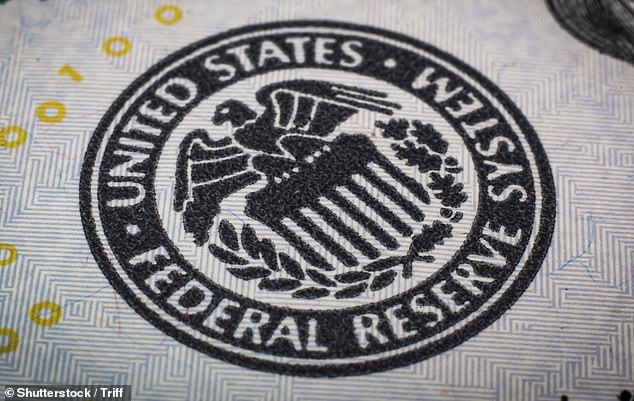US central bank ripping up its rule book as it attempts to rebuild America’s economy in aftermath of coronavirus
The US central bank is ripping up its rule book as it attempts to rebuild America’s economy in the aftermath of the coronavirus pandemic.
After decades of targeting an inflation rate of 2 per cent, the Federal Reserve said it would now tolerate a higher rate as it warned of the ‘serious risks’ which low inflation posed.
The move paves the way for interest rates to stay lower for longer in a boost to borrowers by another bruising blow to savers.
Change of direction: The move paves the way for interest rates to stay lower for longer in a boost to borrowers by another bruising blow to savers
The announcement, made by Fed chairman Jay Powell at the central bank’s annual symposium in Jackson Hole, Wyoming, marks a seismic shift in the way the economy is managed.
And it paves the way for similar moves in the UK and Europe, as both the Bank of England and the European Central Bank have launched their own monetary policy framework reviews.
Powell said: ‘The economy is always evolving, and the Federal Open Market Committee’s strategy for achieving its goals must adapt to meet the new challenges that arise.’
He said that when inflation had been below the 2 per cent target for a while, the Fed would allow it to climb over 2 per cent for a longer period to average out. Controlling inflation is seen as important for central banks. Too high a level can spell disaster as the cost of living escalates, but inflation that is low can signal a stagnant economy with few prospects for jobs and growth.
The latest move from the Fed will cause more disappointment for savers, as it will allow the central bank to keep interest rates lower for longer. When inflation rises above the target level, interest rates are usually hiked to tame spending and prevent a huge escalation in prices. P
Powell said: ‘Many find it counter intuitive that the Fed would want to push up inflation. However, inflation that is persistently too low can pose serious risks to the economy.’
By keeping interest rates lower, and allowing inflation to run slightly higher than 2 per cent, Powell will allow for longer periods of cheap mortgages and business loans which could encourage demand in the economy and support a strong jobs market.
He added that the Fed now thought that ‘a robust job market can be sustained without causing an outbreak of inflation’. The Fed’s strategy review has been under way for almost two years, but shifting to a more supportive monetary policy framework was seen as increasingly important following the pandemic, which has decimated economies around the world.
The US economy plunged 31.7 per cent in the second quarter of the year, and economists are not expecting it to recover to pre-pandemic levels until 2022.
Neil Williams, a senior economic adviser to Federated Hermes, said that allowing inflation to climb over 2 per cent ‘should give the recovery extra room to breathe’.
But even with the changes, Paul Ashworth, chief US economist at Capital Economics, said the Fed could still struggle to hit its 2 per cent inflation target because ‘we don’t expect that additional stimulus to provide any significant boost to the real economy’.
